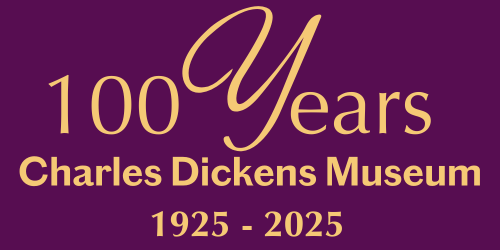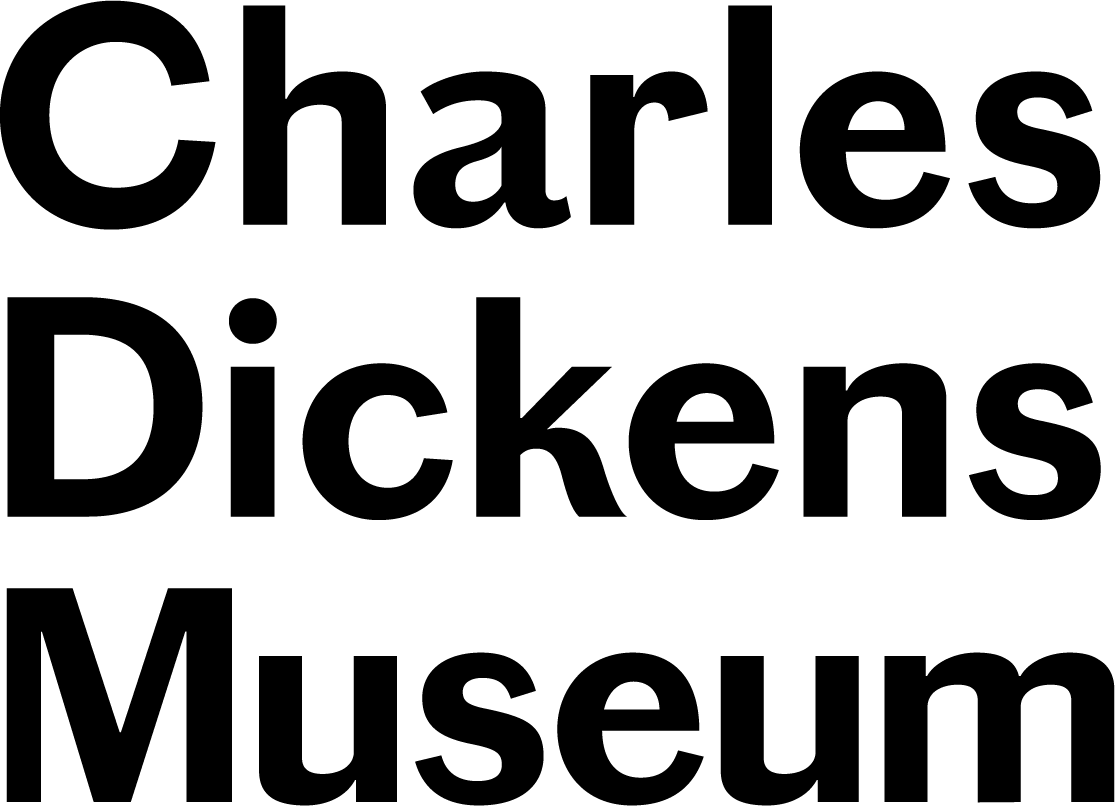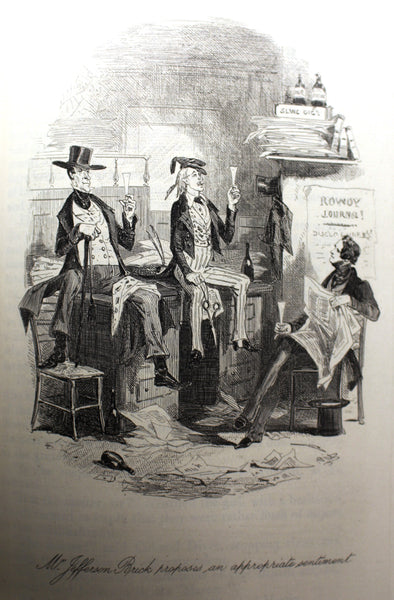Charles Dickens and America - Part III
2017 marks 150 years since Charles Dickens embarked on his second and final voyage to America. In honour of this special occasion we are publishing a four part blog series written by Professor Michael Slater, charting the author’s two trips to the United States and Canada as well as mapping his changing views of North America and its people.
Part III: any sensitive American
Back home by the end of June 1842, Dickens set to work on his contracted travel book and American Notes was published in October. Its harsh criticism of various aspects of American life, manners and politics gave great offence across the Atlantic and both Dickens himself and his book (pirated by American newspapers like all his books) were fiercely attacked in the American press. He resisted the temptation to make any public response, however, and began in the autumn the new full-length ‘novel of English life and manners’, to be published in twenty monthly numbers like Pickwick and Nickleby.
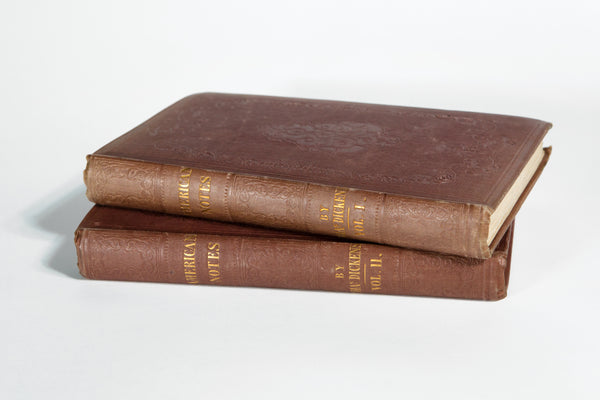
'American Notes' for 'General Circulation' was published in three volumes in 1842. Dickens dedicated the book to ‘'those friends of mine in America ... who, loving their country, can bear the truth when it is told good humouredly, and in a kind spirit'. John Forster has persuaded him to supress an introductory chapter which made mention of ‘any sensitive American’, suggesting he knew too well the strong responses the book would garner.
He had no intention of drawing on his American experiences in the new novel entitled The Life and Adventures of Martin Chuzzlewit but, provoked by the response of the American press to his travel book and continuing attacks on himself in the American press, he changed his mind in the spring of 1843 and at the end of the fifth monthly number his hero, the aspiring architect young Martin Chuzzlewit, announces his intention of going to seek his fortune in the United States. He finds himself in a country full of swindlers and hypocrites and grotesquely boastful patriots in which both public and private life is poisoned by the influence of a thoroughly corrupt and mendacious press.
‘Mr Jefferson Brick proposes an appropriate sentiment’ by Hablot Knight Brown for 'The Life and Adventures of Martin Chuzzlewit.' Dickens took artistic revenge on the transatlantic press through his satire of its journalists. This illustration shows the young protagonist Martin (looking much as one would expect Dickens did during his time in the states) in the New York offices of 'The Rowdy Journal' with its editor Colonel Diver and its war journalist Jefferson Brick (left).
For the next eight years Dickens published no more fiction involving American scenes or characters but in 1850 began editing a weekly journal, Household Word, in which there appeared a number of articles about, or relating, to America, the horror of slavery being a recurrent theme.
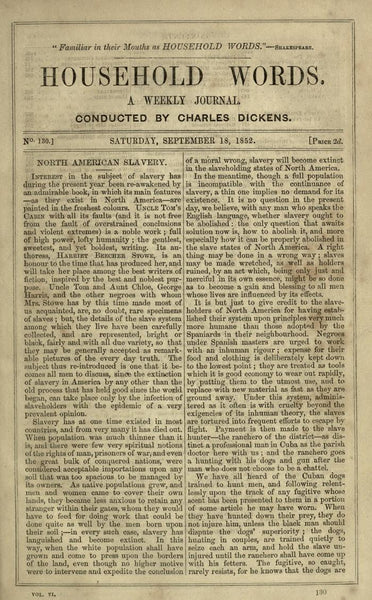
‘North American Slavery’ was published in 'Household Words', 18 September 1852. It was a composite article, written by Dickens and another contributor. Dickens wrote the opening part where he greatly praises Mrs Stowe’s book 'Uncle Tom’s Cabin.' Image from the Dickens Journal Online
Its successor journal All The Year Round likewise contained many articles relating to America. Among those written by Dickens himself was ‘A Young Man From the Country’ (1862) in which he justifies his harsh criticisms of public life in America in American Notes by pointing to the outbreak of the Civil War as a direct result of the failure of the political institutions of young Republic. Another entitled ‘Bound for the Great Salt Lake’, published in his ‘Uncommercial Traveller’ series, deals (favourably) with Mormon emigrants to the United States.
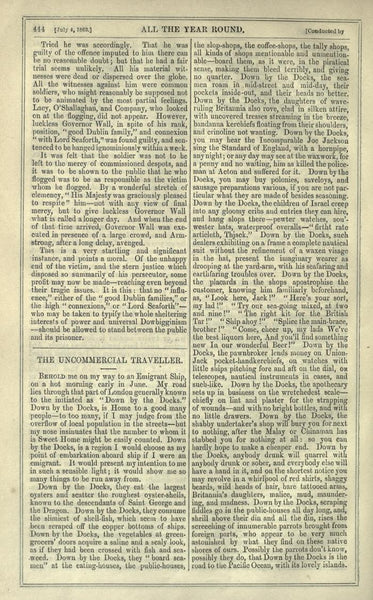
‘Bound for the Great Salt Lake’ was published in 'All The Year Round' in 1863 as part of Dickens’s ‘Uncommerical Traveller’ series. Image from the Dickens Journal Online
Museum Blog
This blog takes you behind the scenes at the Charles Dickens Museum, giving fresh insight on everything from discoveries new and old in our collection, to exhibitions, events and learning initiatives.
You’ll be hearing from a variety of Museum staff and volunteers, as well as guest curators, academics, artists and Dickens enthusiasts. Why not join the debate and let us know you thoughts on the latest blog by using our hashtag #CDMBlog
